The 10 Most Toxic Plants
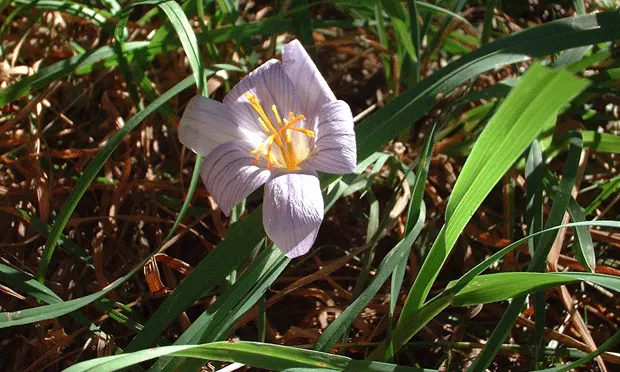
Over their evolution, plants have developed numerous toxic agents to protect themselves from being eaten; many of these substances are extremely poisonous. Even plants that are considered nontoxic-that is, ingestion should not cause serious systemic signs-may result in vomiting and other gastrointestinal disorders. The plants discussed in this article are considered to be among the most toxic for dogs and cats; serious illness and death can result from consumption of relatively small amounts. These plants are commonly found in the home or yard.
Identification of a plant may be difficult. Plants have common names that may differ between various regions of the country. In some cases, plants of different species may share common names, making determination of a genus or species important for proper identification. If necessary, nursery personnel or a florist can be consulted to help identify the plant.
GENERAL TREATMENT CONSIDERATIONSAll cases of toxic plant ingestion are best treated by early, aggressive decontamination. (See Decontamination of the Poisoned Pet) Attempts at emesis should be made in asymptomatic patients, followed by administration of activated charcoal. Charcoal administration can be repeated every 4 to 6 hours while plant matter remains in the gastrointestinal tract. An enema given about 6 to 12 hours after ingestion may further clear plant matter from the gastrointestinal tract. Other treatments are aimed at controlling such signs as vomiting, diarrhea, and arrhythmias.
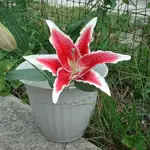
LILIESVarious members of the Lilium genus, including Easter lilies (L. longiflorum), tiger lilies (L. lancifolium), stargazer lilies (L. auratum), and various species of day lilies (Hemerocallis species); depending on the species, the flower's stem is about 1 to 8 feet tall uncut.
Occur wild throughout North America.
Commonly sold as cut flowers or as part of floral arrangements; day lilies are a common landscaping plant.
Toxicosis occurs only in cats.
Principal Toxin
Unknown
All parts of the plant are toxic (even the pollen).
Causes acute renal failure secondary to acute tubular necrosis.
Clinical Signs
Initially, vomiting, anorexia, and lethargy starting within hours of ingestion; vomiting may subside by 12 hours.
Renal values (blood urea nitrogen, creatinine, and phosphorus) and potassium levels begin to increase by 24 to 72 hours.
Renal epithelial tubular casts and glucosuria can be seen within 18 hours.
Treatment
Decontamination; fluid diuresis-twice maintenance amounts for at least 48 hours
Prognosis
Guarded with delayed onset of treatment (24 hours or greater) and in presence of oliguria/anuria.
Renal function can return but may take weeks; chronic renal failure may be sequela.
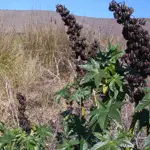
CASTOR BEANRicinus communis (castor bean plant); also known as castor oil plant, mole bean, wonder tree
Occurs in the South, Southwest, and California; may be wild or cultivated for castor oil; plants can stand 3 to 14 feet tall and have large leaves (12 inches or greater).
The beans are used as decorative beads.
Principal Toxin
Ricin, a glycoprotein
Blocks protein synthesis, leading to cellular death.
Is present in all parts of the plant but most concentrated in the beans.
Highly toxic; a single bean can kill a dog.
The outer coating of the bean must be ruptured (chewed) to release the ricin.
Clinical Signs
May take up to 24 hours to appear; initial signs include vomiting and often bloody diarrhea, abdominal pain, weakness, and ataxia.
Hemoconcentration, leukocytosis, and elevated liver enzymes can be seen on clinical laboratory testing.
Treatment
Decontamination; gastrointestinal protectants, such as sucralfate and histamine blockers, intravenous fluids, and general supportive care
Prognosis
Good with prompt decontamination; guarded once signs develop
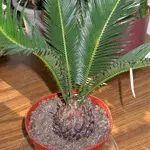
CYCAD PALMSMany species, but principally sago palm (Cycas revoluta) and fern palm/false sago palm (C. circinalis); size varies with species and can range from 6 to 30 feet tall with long leaves (up to 9 feet).
Used as ornamental plants in Florida and occasionally in California; can be houseplants in northern climates.
Sago palms are available as bonsai trees.
Principal Toxin
Cycasin, a glycoside, yields methylazoxymethanol after bacteria metabolism
Cycasin is present in the whole plant, but concentration is highest in the seeds; ingestion of as few as 1 to 2 seeds can cause severe clinical signs and death.
Clinical Signs
Initially, vomiting, possibly beginning within a few minutes of ingestion of the seeds; vomiting may last for hours.
Hypersalivation and polydipsia can be seen.
Over the next few days, anorexia, diarrhea or constipation, hepatomegaly, and icterus are seen.
Neurotoxic effects can be seen but these may be secondary to hepatic failure.
Clinical pathology includes thrombocytopenia, bilirubinemia, elevated hepatic enzymes, and azotemia.
Pathology
Liver has a nutmeg appearance.
Acute centrolobular hepatic necrosis occurs.
Fibrosis, bile stasis, and fatty changes develop over time.
Petechial hemorrhage and renal tubular necrosis are also seen.
Treatment
Symptomatic and supportive care for gastrointestinal and hepatic signs (antiemetics, gastrointestinal protectants, such as sucralfate, adenosyl for liver signs)
Prognosis
Poor once hepatic necrosis has occurred
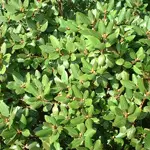
RHODODENDRON, AZALEA, LAURELMany species of plants from the Ericaceae (heath) family, including Rhododendron species (rhododendron, azalea, rosebay), Kalmia species (laurel), Leucothoe species (black laurel, fetterbush), Lyonia ligustrina (maleberry, staggerbush), Pieris japonica (Japanese pieris), Ledum glandulosum (Labrador tea)
Ornamental plant found throughout North America; size of plant and leaves varies greatly with species.
Principal Toxin
Grayanotoxins (formerly know as andromedroxtoxin)
Toxin blocks the sodium channel in cells; principally affects muscle and nerve cells.
Whole plant is toxic.
Clinical Signs
Predominately vomiting, starting within a few hours of ingestion; diarrhea is rare.
Aspiration pneumonia is a possible sequela.
Cardiac arrhythmias are possible.
Neurologic signs may include depression, ataxia, weakness, and seizures.
Treatment
Symptomatic and supportive care for vomiting, arrhythmias, and seizures
Prognosis
Good if seizures or aspiration has not occurred
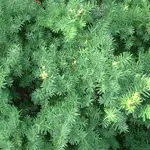
YEWS
Numerous Taxus species
Occur throughout the United States;often used as hedges; can grow up to 75 feet high depending on species, but often are trimmed.
Principal Toxin
Various taxane derivatives or taxines, which are negative inotropes and chronotropes
All parts of the plant are toxic; deaths following chewing on branches have been reported in dogs.
Clinical Signs
Death may be so rapid that there are no signs.
Vomiting and neurologic signs are most common in dogs, although bradycardia can also be seen.
Treatment
Symptomatic care for neurologic and cardiac signs with atropine and/or lidocaine
Prognosis
Guarded if signs appear
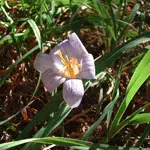
AUTUMN CROCUSESColchicum autumnale (autumn crocus, meadow saffron); Colchicum speciosum(showy autumn crocus)
Occur throughout the United States; leaves, which grow from the base, can reach about a foot long; flowers appear after the leaves have died in the autumn.
Principal Toxin
Colchicine and similar alkaloids which prevent cell division
All parts of the plant are toxic but highest concentration of the toxin is found in the flower, the corm, and the seeds.
Clinical Signs
Signs may take 12 to 24 hours to develop and initially occur as hypersalivation, depression, vomiting, milky or bloody diarrhea, and abdominal pain.
Progress to weakness, paresis, and collapse.
Multiple organ failure can occur.
Treatment
Supportive care including IV fluids with dextrose and calcium; aspartate should be given in the IV fluids early in the course of toxicosis.
Prognosis
Guarded
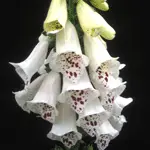
FOXGLOVEThree species occur in the United States: Digitalis purpurea (common or purple foxglove); D. lanata (Grecian foxglove); and D. lutea (straw foxglove).
Occurs wild in the Pacific Northwest but is grown as an ornamental throughout North America; stems can range from 1 to 6 feet tall with 1- to 2-inch conical flowers.
Principal Toxin
Cardenolides, principally digitalis, a cardiac glycoside
All parts of the plant are toxic, but highest concentrations are found in the flowers, fruit, and immature leaves.
Dried plant matter retains toxicity.
Clinical Signs
Initially, gastrointestinal signs are present.
Cardiac arrhythmias of any type can occur.
Treatment
Repeated doses of activated charcoal are especially efficacious.
Supportive care for gastrointestinal signs
Symptomatic control of arrhythmias (e.g., atropine for bradycardia, lidocaine for ventricular tachycardia). Digibind (Savage Laboratories, Melville, NY), a Fab antibody, can be used to bind and enhance elimination of digitalis. However, because Digibind is expensive, use is generally restricted to patients with nonresponsive arrhythmias and severe hyperkalemia.
Prognosis
Good, unless intractable arrhythmias or hyperkalemia develops
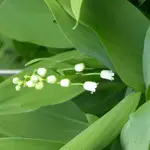
LILY OF THE VALLEYConvallaria majalis
Grown as ornamental throughout United States; plant has broad, erect leaves (4 to 8 inches) with small, bell-shaped flowers.
Principal Toxin
Cardenolides, potent cardiotoxins
Toxin is concentrated in the roots, but all parts of the plant are toxic.
Clinical Signs
Initial signs are gastrointestinal with vomiting and hypersalivation; diarrhea is less common.
Cardiac signs include bradycardia and other arrhythmias.
Seizures may also occur.
Death may be sudden without any prior signs.
Treatment
Same as for foxglove
Prognosis
Good, unless intractable arrhythmias or hyperkalemia develops
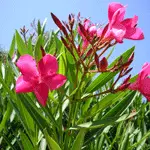
OLEANDERNerium oleander, also known as laurel rosa, laurel blanco, laurel colorado, rosa laurel
Not native to North America; found in the South and California
Frequently planted as roadside hedge or backyard ornamental; can grow from 7 to 20 feet tall.
Principal Toxin
Cardiac glycosides
Toxicity often due to ingestion of dead/dry leaves; green leaves are bitter and less likely to be eaten; when the leaf dies, the sugar moiety is released from the cardiac glycoside, which improves palatability.
Clinical Signs
Initially vomiting and diarrhea (the latter may contain blood)
Signs may progress to cardiac arrhythmias of any type (similar to digitalis toxicity).
Treatment
Symptomatic care for gastrointestinal signs
Arrhythmias should be treated symptomatically (e.g. atropine for bradyarrhythmias, propranolol/lidocaine for tachyarrhythmias); consider use of Digibind.
Prognosis
Good with aggressive therapy
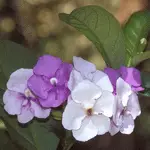
YESTERDAY, TODAY, AND TOMORROWBrunfelsia australis. Photograph shows B. grandiflora; flowers are identical to those of B. australis but appear in clusters whereas in B. australis they are spread out over plant.
Ornamental found mainly in the South; grows as a shrub or small tree.
Principal Toxin
Brunfelsamidine, a neurotoxin that causes seizures
All parts of the plant are toxic.
Clinical Signs
Coughing, gagging, and nystagmus can be seen within minutes to hours; tremors and seizures, usually characterized by extensor rigidity (may resemble those of strychnine toxicity)
Treatment
Supportive care with IV fluids
Control seizures with diazepam, barbiturates.
Prognosis
Guarded; signs can last for days and complete recovery may take weeks.
Related Articles:Lily ToxicosisEthylene Glycol Toxicosis in Dogs & Cats